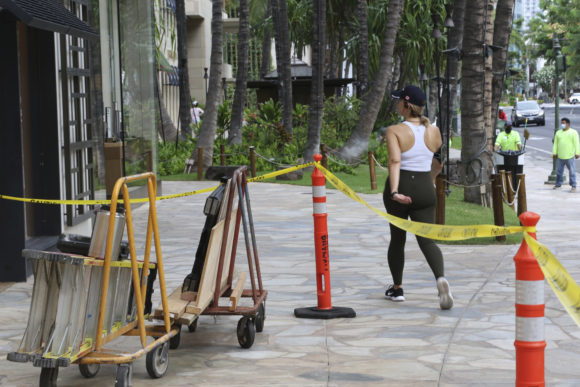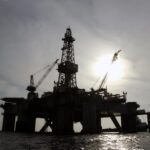HONOLULU — Hawaii prepared for the onslaught of Hurricane Douglas on Sunday, with predictions of high winds, rain and storm surge.
“It’s definitely going to be a triple threat,” said National Weather Service meteorologist Vanessa Almanza said.
Rainfall from the storm can be anywhere from 5-15 inches (13-38 centimetres). It’s “probably not a good day to go to the beach,” Almanza said.
Douglas weakened Saturday to a Category 1 hurricane as it approached Hawaii, but officials warned people should not be lulled into complacency. The National Weather Service said Douglas should remain a hurricane as it moves through the islands Sunday.
“Douglas is continuing a gradual, slow, weakening trend, which in itself is good news, but the bad news is that this hurricane is going to come very close to the islands even as it’s weakening,” said Robert Ballard, the science and operations officer at the Central Pacific Hurricane Center. “And we do expect significant impacts as it makes its point of closest approach or possible landfall as it comes through.”
Oahu, home to the state’s largest city, Honolulu, was placed under a hurricane warning with the storm beginning to impact the island as early as late morning. Kauai and Maui were also placed under warning status Sunday, while a hurricane watch was canceled for the Big Island.
Maximum sustained winds decreased to about 90 mph (150 kph) Saturday and remained at that level Sunday.
“We know that it is weakening as it approaches, but it still will have significant impact on each island,” Hawaii Gov. David Ige said at a news conference.
State health department officials contacted each of the 625 people who were currently in isolation or quarantine as of Friday because they are either COVID-19 positive or have been in contact with someone who is. Every one of those indicated they would shelter-in-place and not seek refuge at a hurricane shelter.
“That gives a sigh of relief,” said Honolulu Mayor Kirk Caldwell.
Hawaii has some of the lowest coronavirus infection rates in the nation, but COVID-19 numbers have been rising in recent weeks. Every day since Thursday, Hawaii has reported record highs of newly confirmed cases, including 73 on Saturday.
Caldwell said at the same news conference that 13 shelters were to open at 9 a.m. Sunday around Oahu, well ahead of the hurricane impacting the island, anywhere from midday into the evening. People will have to wear face coverings to be admitted, and will have to wear them unless they are eating, drinking or sleeping.
The storm was about 235 miles (380 kilometers) east of Honolulu early Sunday, moving west-northwest at 16 mph (26 kph).
President Donald Trump issued an emergency declaration for Hawaii because of the hurricane, directing federal assistance to supplement state and local response efforts.
Hawaiian Airlines canceled all Sunday flights between Hawaii and the U.S. mainland and also between the other islands.
Ige said residents should already have their 14-day emergency supply kit in place, but because of COVID-19, he encouraged people to add masks, hand sanitizer and sanitizing wipes.
Honolulu resident Scott Silva had supplies in hand.
“Just make sure I had enough food, you know, enough extra water, which I usually do anyway, so that’s about it,” he said. “Not expecting too much trouble from this one.”
AP journalists Caleb Jones in Honolulu, Mark Thiessen in Anchorage, Alaska, and Julie Walker in New York contributed to this report.
About the photo: A woman walks past boarded storefronts in the Waikiki neighborhood of Honolulu, Saturday, July 25, 2020, as Hurricane Douglas approaches. President Donald Trump issued an emergency declaration for Hawaii on Saturday because of Hurricane Douglas, directing federal assistance to supplement state and local response efforts. (AP Photo/Caleb Jones)
Was this article valuable?
Here are more articles you may enjoy.


 Two Chevron Workers Die of Injuries From Angola Platform Fire
Two Chevron Workers Die of Injuries From Angola Platform Fire  Will Workers’ Comp Benefit from ‘Most-Favored-Nation’ Drug Pricing?
Will Workers’ Comp Benefit from ‘Most-Favored-Nation’ Drug Pricing?  Citi Reverses Course on Firing of Japan Trader Five Years On
Citi Reverses Course on Firing of Japan Trader Five Years On  DIY Home Inspections? They Are Taking Over, Firms Say
DIY Home Inspections? They Are Taking Over, Firms Say 